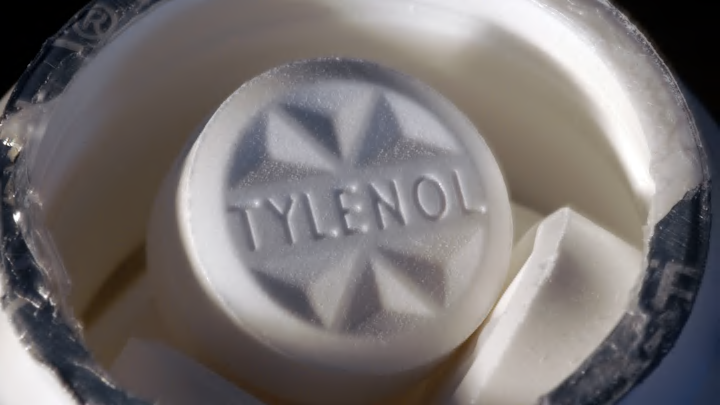Every time you struggle to open a bottle of medication or pierce a tamper-resistant seal, you’re feeling the effects of the Tylenol murders. In fall 1982, an unknown individual poisoned several bottles of the pain reliever in the Chicago area by adding cyanide. A total of seven people were killed after ingesting the pills.
Over 40 years later, authorities may be on a new path to finding the killer.
CBS 2 in Chicago reports that the Arlington Heights Police Department is pursuing DNA testing in connection with a family who purchased a tampered Tylenol bottle back in September or October 1982. Lewis Morgan, then a DuPage County judge, and his wife Linda Morgan had the bottle in their home but opted not to take any of the pills. That decision likely saved them, as well as their 3-year-old daughter Laura, from tragedy.
As revealed in a Freedom of Information Act (FOIA) request by CBS 2, authorities obtained a DNA swab from Laura in January 2020. They also sought DNA from her father's smoking pipes. (Lewis Morgan died in 2018.)
The Morgans are not suspects. The goal, according to the police department, is to account for everyone who handled one of the contaminated bottles. In doing so, they can better isolate the DNA of the person or persons who may have been responsible for the murders.
Why now? In 2020, the police began a coordinated effort with Othram, a biotech company able to extract small or degraded traces of DNA from samples. It’s specialized work that law enforcement laboratories may not be able to perform on their own. This is the first time it’s been used in relation to the Tylenol case.

“If you’re asking me, can you touch something and then get enough DNA to identify somebody? Yes,” Kristen Mittelman, chief development officer at Othram, told CBS 2. “It doesn’t matter if it’s a pill bottle, a gun, a bullet, anything. You can. And it’s been done. ... If there is DNA that is found, then we’re likely to identify you. Even if it was degraded, even if it was mixed. Even if there were contaminations, even if you tried to wash it off.”
According to CBS 2, a man named James Lewis has been a suspect in the murders for decades. Lewis wrote an extortion letter insisting on a $1 million payment from Johnson & Johnson, the maker of Tylenol, or the tampering would continue. Lewis served time for the extortion plot but was never charged with the murders of Mary McFarland, Terri Janus, Stanley Janus, Adam Janus, Mary Reiner, Mary Kellerman, or Paula Prince, all victims of the tampered bottles.
One of the most provocative details concerning Lewis came in 2007, when, according to The Chicago Tribune, it was discovered the extortion letter had a postmark of Oct 1, 1982. Lewis had previously told authorities writing the letter had taken him three days. If he began writing it in late September, it would have been before news of the murders had begun to spread. In addition, Lewis was believed to have been in possession of a book on poison, with his fingerprints on the pages relating to cyanide.
DNA was collected from Lewis in 2010, but no arrest was made. Investigators spoke to him again in September 2022.
That same month, The Chicago Tribune reported that investigators were petitioning prosecutors to act on what it termed a “chargeable, circumstantial case.”
Lewis has not been charged and has denied being the killer. In what might be a prosecution’s largest stumbling block, Lewis was not in Chicago at the time the bottles were thought to be tampered with and placed on store shelves. He was living in New York.
Because records provided to the news outlet were redacted, it’s not currently known what other evidence has been sent to Othram for further analysis or if Lewis remains their prime suspect. Owing to the sensitivity of their testing, it’s possible that we may one day learn the identity of the killer who has eluded capture for over 40 years.
[h/t CBS News]
